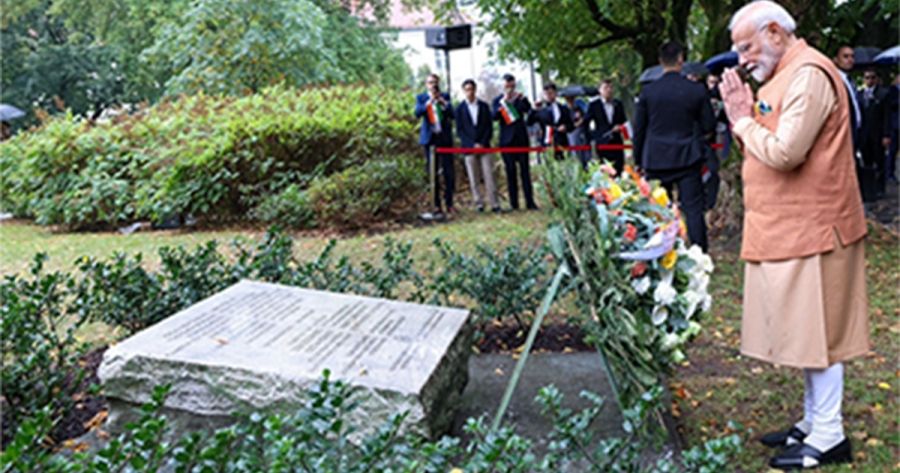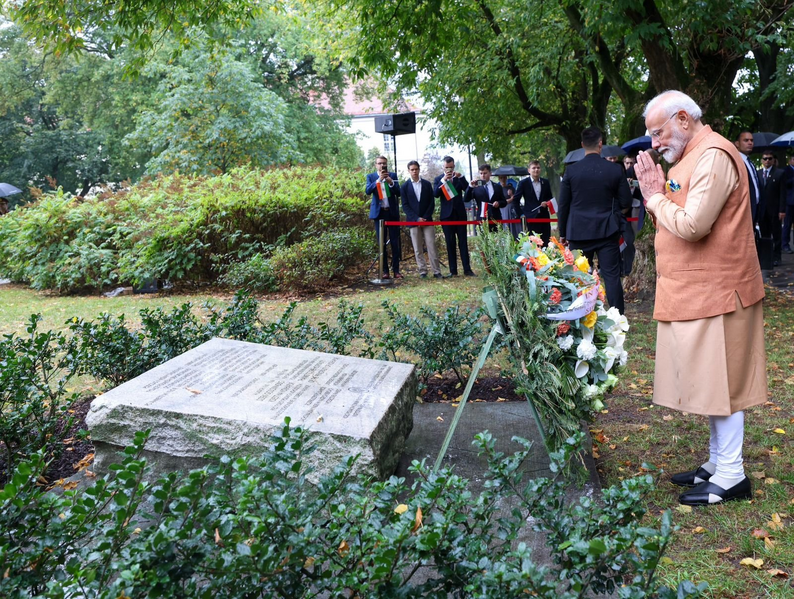
- Free Article: No
- Contents Category: Commentary
- Custom Article Title: The twilight of Narendra Modi: India’s leader’s invincibility is fraying
- Review Article: No
- Article Title: The twilight of Narendra Modi
- Article Subtitle: India’s leader’s invincibility is fraying
- Online Only: No
- Custom Highlight Text:
The monsoon has now settled the dust stirred up during an eventful and blisteringly hot early summer in India. From April to June, in seven stages of voting and in temperatures that in some parts reached the high forties Celsius, almost 650 million people cast their votes in the largest election ever organised. The polls and the pundits predicted another big victory for Narendra Modi and the Bharatiya Janata Party (BJP). Yet when the verdict came, it surprised most observers. The BJP, supported by its coalition partners, was returned to office with far fewer seats than expected, and with Modi’s political authority much diminished.
- Featured Image (400px * 250px):
.png)
- Alt Tag (Featured Image): ‘The twilight of Narendra Modi: India’s leader’s invincibility is fraying’ by Ian Hall
Meanwhile, divisions emerged between Hindu nationalist hardliners and more pragmatic elements in the movement. In West Bengal, for example, the BJP Leader of the Opposition in that state’s Assembly, Suvendu Adhikari, called for the party slogan, Sabka Saath, Sabka Vikas – loosely, ‘Everyone Together for Everyone’s Development’ – be replaced with a less inclusive pro-Hindu and anti-Muslim message.
Some of these disagreements were not novel. The Hindu Right has long been split over whether the best way to achieve its objectives is building a coalition of voters around a technocratic platform of growth and good governance, or trying to consolidate the Hindu vote with sectarian appeals. But the public airing of these disputes and the vocal criticism of the prime minister that went with it were unusual.
Like all successful leaders, Modi, prime minister since 2014, has acquired enemies on his own side of the political divide as well as among his parliamentary opponents. However, for the past decade or more the prime minister has been such a dominant force in Indian politics that few have dared openly to challenge him. Moreover, on the rare occasions when critics have gone public, such as the veteran BJP leader and erstwhile Modi mentor, L.K. Advani, they have found themselves rapidly and firmly sidelined.
This ruthlessness – even towards respected party elders – has long been tolerated, for Modi has an impressive track record of winning elections. Since he made the transition from backroom strategist to elected politician in 2001, he has never lost a major contest. As Chief Minister of Gujarat, Modi delivered the BJP three back-to-back state election victories – an unprecedented achievement. At the national level, he led the party to landslide wins in 2014 and 2019, securing more seats in the Lok Sabha than the BJP had ever won before.
 Narendra Modi at the Holhapur Memorial in Warsaw, 2024 (Prime Minister's Office via Wikimedia Commons)
Narendra Modi at the Holhapur Memorial in Warsaw, 2024 (Prime Minister's Office via Wikimedia Commons)
Over time, this success convinced other BJP leaders that Modi had unique powers and that his autocratic style was best overlooked. They developed respect for his capacity to both hone and deliver a compelling message and to galvanise the party to lead disciplined campaigns. Furthermore, they appreciated his ability to draw votes from numerically large lower caste groups to the BJP, a party that traditionally appeals to higher caste Brahmins and Baniyas (merchants). They recognised that many people from these disadvantaged but aspirational communities identified with Modi and his meteoric rise, born as he was not into an élite family but one belonging to what the Indian government calls the Other Backward Classes (OBC).
Convinced that Modi was unstoppable, the BJP built its bid for re-election in 2024 around their talismanic prime minister. Its campaign was launched with the slogan ‘Choose Modi’ (Modi ko Chunte hai). With an upbeat YouTube video and a catchy song, the party then launched a viral campaign encouraging Indians to join the ‘Modi Family’ (Modi ka Parivaar) by adding that phrase to their social media profiles, as well as by supporting him at the ballot box. When the BJP finally unveiled a manifesto – complete with almost fifty photographs of the prime minister – it was simply titled: ‘Modi’s Guarantee’.
This Modi-centric approach made sense to BJP strategists. He was a proven winner; poll after poll reported sky-high ratings for the prime minister. But it was risky. Voter surveys such as India Today’s Mood of the Nation poll conducted in December 2023 and January 2024 found widespread unhappiness about the government’s management of the economy, especially the chronic shortage of good jobs. In the early stages of the campaign, there were signs that many Indians were tiring of Modi, regardless of how much they respected him, and tiring of the ubiquitous presence of his image on every bus shelter, gas cylinder, and government website. As voting got underway, some BJP workers told journalists that apathy was widespread, within and beyond the party.
To cut through this apathy and stir up the Hindu nationalist base, Modi went on the offensive. In a speech in Rajasthan, he made the false claim that the Opposition Congress Party planned to seize the assets of Hindu families and redistribute them to ‘infiltrators’ who have more children – in other words, to Muslims. Then, in a rare interview, he claimed he had been ‘sent by God’ to be God’s ‘instrument’.
These two statements were widely criticised as communal and egotistical. Politically they also fell flat, doing little to energise voters or encourage them to vote. In Rajasthan, turnout dropped by five per cent and the BJP lost ten of the twenty-four seats it had won in 2019. In Bihar and Uttar Pradesh, where the party had championed the prime minister as an almost priest-like restorer of Hindu pride, it suffered similar losses. Across North India, voters turned away from the BJP, including many from those lower caste communities who earlier put their faith in Modi to deliver them jobs and upward mobility.
These failures were not enough to lose the BJP the election, but they foreshadow the end of the Modi era. For the first time in more than two decades, the ‘King of Hindu Hearts’ no longer appears invincible. His political authority has suffered what might be best described as a slow puncture – inexorably deflating and prone to sudden failure.
Other BJP and Hindu nationalist leaders are well aware of this situation. It is this weakening of Modi’s position that has allowed figures like Adhikari, in West Bengal, to openly criticise the prime minister. Further public challenges will no doubt come, either from inside the Cabinet, from ambitious ministers bruised by Modi’s autocratic manner or envious of his success, or from outside it. Pressure is building up on the hard right of the movement, especially, which wants to see the BJP deliver a more openly pro-Hindu agenda.
How Modi responds will define his remaining time in office. Some think he needs to dismantle what they see as the cult of personality around him and to adopt a more collaborative style of government, allowing other senior figures more space to drive policy. Modi’s close ally, Mohan Bhagwat, the head of the Hindu nationalist Rashtriya Swayamsevak Sangh (‘National Volunteer Organisation’ or RSS), has time and again counselled the prime minister to be more humble. In the wake of the election defeat, Bhagwat did so again, with the oblique comment that that, while human beings might sometimes want to be gods or supermen, a true servant (sevak) of the nation eschews such arrogance.
Modi has paid little attention to this advice in the past, and there is no reason to think he will do so now. Instead, he will likely look to recalibrate his government’s strategy. But here he has only limited room for manoeuvre. Modi’s past success depended on stitching together a broad coalition of support from different segments of society with different sets of policies. Put crudely, that has meant pledging better infrastructure to the urban middle class, the hope of a brighter future to the young and ambitious, much-needed welfare to the rural poor, less bureaucracy to big business, and temples – like the new Ram Mandir in Ayodhya – for the Hindu nationalist base.
This delicate balance was enabled by Modi’s unmatched political authority. For a decade, he seemed to all these different interests to be the only leader capable of meeting their demands. Now, with the defection of some aspirational lower caste voters, things have changed and difficult choices loom that could alienate more key constituencies.
Modi could push for reforms required to attract more foreign investment and to create much needed jobs. However, this would likely involve challenging powerful corporate interests and those of the rural poor. He could tack right and embrace the more sectarian, pro-Hindu agenda demanded by figures like Adhikari in West Bengal.
But that could harm India’s global reputation, undermine the confidence of investors, and slow growth, disappointing the middle class. Modi’s legacy will be defined by which path he decides to take, in the twilight of an era defined by his dominance.
This article is one of a series supported by Peter McMullin AM via the Good Business Foundation.


.png)
Comments powered by CComment